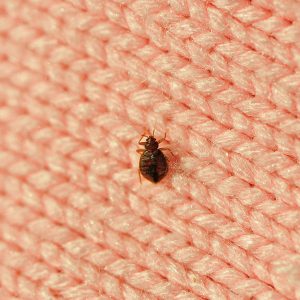 in bed bug prevention prevent bed bugs Tips for Bed Bug Prevention A Mosquito Bite or A Bed Bug Bite bed bugs bed bugs and mites
in bed bug prevention prevent bed bugs Tips for Bed Bug Prevention A Mosquito Bite or A Bed Bug Bite bed bugs bed bugs and mites
Bedbugs made news a few years ago after infesting hotel rooms in tourist-heavy locales such as Chicago and New York. But bedbugs can hitch a ride almost anywhere, on almost anything—and have become a scourge to residents in a number of U.S. cities, including Columbus, Cincinnati and Cleveland.
The problem at one point grew so bad that central Ohio formed a public-private task force to try to cut down on the growing number of bedbug infestations in the region. Bedbugs made a comeback because many of the pesticides once used against them were found to have adverse consequences on the environment, and the little creepy-crawlies eventually developed a resistance to the compounds that were used instead.
By 2018, bedbugs had become an epidemic across much of the Buckeye State. Their bites can cause itching and skin rashes, and infections if they are scratched open. Their shed skin can cause problems for asthmatics, and their mere presence can cause sleeplessness and stress. Bedbug outbreaks are typically worse in shared housing such as apartments and dorms—though detached single-family homes are vulnerable as well.
How do I tell if I have bedbugs?
Bedbugs are reddish-brown insects about the size of Abraham Lincoln’s head on a penny. They do not have wings and cannot jump or fly—but they move fast, hide during the day in dark, protected locations, and feed on the blood of humans or other warm-blooded animals. So, what are the tell-tale signs of bedbugs in your home?
- Watch for stains—The presence of bedbugs can leave small, dark brown or red stains on sheets, pillowcases or mattresses. Those spots are the excrement of live bedbugs or the blood of dead, crushed ones (gross, right?) and one of the primary indications that you have a bedbug infestation.
- Be alert for the bugs themselves—Finding crawling bugs on bedding isn’t unusual, as is finding dead bugs, molted bug skin, or eggshells. These can all gather in the seams and crevices of beds. If the infestation is severe, a musty smell may also be present.
- Itch, itch, itch—While bedbugs are not known to transmit disease, their bites produce small welts similar to mosquito bites. People may notice them first thing in the morning, or if they get up in the middle of the night. The welts can occur in rows, and they’re very itchy.
How do I get rid of bedbugs?
The first step in eliminating a bedbug infestation is being aware of the scope of the problem—they can embed themselves not just in sheets, comforters and pillowcases, but also curtains or even artwork that may be near the bed. Since “bug bomb” devices don’t typically work on bedbugs, here are other strategies to deploy. 
- Locate the infested area—Grab a flashlight and a magnifying glass (if you have one) and do some detective work. Scour not just the bed and the area around it, but also furniture joints, flaps of loose wallpaper, inside electrical outlets, baseboards, or anywhere else there may be a narrow gap. You want to contain the outbreak before the bedbugs reproduce, so be vigilant.
- Grab your vacuum—When trying to get rid of bedbugs, a vacuum cleaner is your best friend. Run the vacuum (using the narrow-opening attachment for all those cracks and crevices) over anything you think might contain bedbugs. Seal the vacuumed contents into a plastic bag and discard the bag outside the home.
- Start the washer—Take any clothes or bedding that you suspect may be infested and wash them on the hottest temperature setting your washer has, then follow that with the dryer as hot as it will go. If you can’t wash and dry it, seal it up in a plastic bag for a few months. Running a steamer over materials that can’t be washed may also help.
How do I prevent a recurrence of bedbugs?
Bedbugs are tough to find until they’re a problem—and then they’re even tougher to get rid of. Know the signs of bedbugs so you’ll notice them immediately, and not too late after the insects have reproduced. Scour any second-hand items coming into your home. Wash bedding routinely in very hot water and seal up cracks and crevices where bedbugs love to hide.
Cutting down on clutter and vacuuming frequently can also help to keep bedbugs at bay. But the easiest way to stop them is to avoid letting them in the house at all, so be extra vigilant after hotel stays, sleepovers by the kids, or any other activity that could allow these unwanted stowaways to get into your home.
Having your home checked regularly as part of a pest prevention program can help ensure that bedbugs or other pests don’t become a problem. Avoiding an infestation of bedbugs begins with proactive inspection and regular treatment.
To learn more about treating bedbugs in the home, or about a general pest prevention system,
Call A-1 Able Pest Doctors at (800) 737-8189.
Tags: bed bug prevention prevent bed bugs Tips for Bed Bug Prevention A Mosquito Bite or A Bed Bug Bite bed bugs bed bugs and mites

Recent Comments